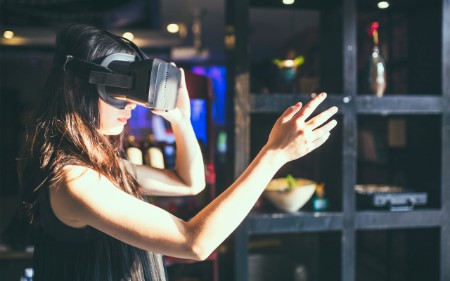
Chapter 1
Quantified citizen
By 2020, China’s Social Credit System — now in the pilot stage — will give everyone a mandatory Citizen Score.
Attitudes to privacy are different in China. Much information on citizens is centrally available to administrative authorities. New technologies that enable companies to collect, analyze and use vast amounts of data have alarmed some consumers in the West. The need to manage expectations has, rightly, led companies to tread with caution. Inevitably, this has slowed innovation. But such concerns do not exist at anything like the same level in China.
By 2020, the country’s Social Credit System — now in the pilot stage — will give everyone a mandatory Citizen Score. Each person’s score will reflect a range of factors. From what they buy and where they shop, to where they travel, who they are friends with, how much time they spend playing computer games and whether they pay their bills on time. These factors will all be continually monitored and evaluated.
A low score could result in slower internet speeds, restricted access to restaurants, a lower ranking on dating sites and travel bans. Benefits of a high score could include fast-track visas, VIP check-in at the airport and discounts for hotels, car rentals and insurance policies.
In many ways, the Citizen Score rolls together the kind of data that disparate organizations — from credit rating agencies, to medical insurers, to social media platforms — have been harvesting for years outside of China. A difference is that the Social Credit System is run by the state.
Reshaping behavior
One of our teams at the Shanghai hack modeled a world in which the Citizen Score evolves to reshape consumer behavior. Future consumers in this world feel that monitoring, analyzing and scoring their life is the right way to achieve a balanced, harmonious society.
The state puts boundaries around the choices consumers can make, which consumers respect. But there is also room for a degree of individual expression. When making those choices, consumers want to enjoy themselves. But they also want to learn something new and make a contribution to their community. They value these outcomes in their own right, and because they enhance their Citizen Score.
Such a high degree of state involvement in everyday life is experienced as a benefit, not a burden. Maintaining and improving one’s score is an ongoing project. It enables society as a whole to develop faster and for everyone to participate in success. Consumers are proud of the status and life opportunities that a high score confers. It is an asset to the individual consumer, and it brings honor and value to their family, their community and their network. A high score is the gateway to a better life.

Chapter 2
Experience everything
Immersive shopping is the ultimate social activity for these future consumers.
On November 11 each year young people across China celebrate their status as relationship-free and single. And mainly they celebrate by shopping. Thanks to 24-hours of heavy discounting, promotion and — more recently, innovation — retailers and brands have turned Singles Day into the world’s biggest annual one-day shopping event.
It’s now nearly four times bigger than the two biggest shopping days in the US — Black Friday and Cyber Monday. Sales through stores using the online platform Alibaba have grown from US$6billion in 2013 to US$25billion in 2017.6
This is an event that clearly connects with the Chinese consumer. And it’s about retail innovation as much as discounting. In 2017, Tmall opened 60 pop-up stores in 52 malls, collaborating with over 100 domestic and international brands. The stores featured innovations such as augmented reality and interactive “magic mirrors” that allow customers to try new looks, without getting changed.
More than 1,000 brands converted more than 100,000 physical locations into “smart stores” that used features like facial recognition, RFID tagging, and mobile gamification to engage consumers.
Retail redefined
One of our teams at the Shanghai hack modeled a world in which this hunger for an enjoyable and novel retail experience leads to a fundamental reshaping of the retail landscape. In their world, shopping is one of the most exciting and rewarding experiences in everyday life, while AI takes care of mundane transactions — silently, swiftly and conveniently, in the background.
As AI technology evolves, consumers trust it to look after more of their spending — and expect it to deliver greater value to their lives. Insatiable demand for novelty and value drives companies to innovate relentlessly. Words such as “convenience,” “experience” and “retail” are redefined.
“Good enough” products are no longer good enough for consumers who show no loyalty. They don’t just ditch brands that fail to give them what they want; they exercise their responsibility to give negative feedback. This harms a brand’s “Brand Score” and makes it harder for the brand to engage other consumers.
Shopping love
Immersive shopping is the ultimate social activity for these future consumers. It connects them to their families, friends and peers. Consumers enjoy co-creating products with people in their network. One consumer could take a high-end handbag, personalize the design and share it with a friend, who tells the brand to manufacture it as a gift for her mother. Product design and innovation becomes social, circular and iterative. Brands involve themselves in the process, but as facilitators and equal partners. They prosper by anticipating the consumer’s constantly evolving demands and finding new ways to delight and entertain.
In the physical world, consumers experience their brands of choice at immersive destinations that feel like a mix of art gallery, theme park and religious temple. These are spaces where consumers engage with the brand in novel and unexpected ways. Their purpose is to wow new customers and deepen the connection with the faithful.
Related article
Emerging technologies embed the brand experience into every aspect of the consumer’s life. From VR to local events, the experience is consistent, connected and compelling across every imaginable touchpoint. Everything is social. Consumers receive a seamless flow of choices, recommendations, and feedback from across their networks. AI takes care of mundane purchasing, so consumers can use the extra time now available to live the lives they want.

Chapter 3
Ascendant consumer
Chinese consumers will spend about a third more each year in total than their counterparts in the US.
The market for consumer goods in China is approaching a symbolic tipping point. In 2011, in US dollar terms, it was worth 73% of the market in the US. Today it stands at 91%. In the years to 2030 it will overtake the US to become the world’s biggest market. Chinese consumers will spend about a third more each year in total than their counterparts in the US. While the market in the US will grow by around 38%, in China it will more than double.7
Chinese consumers will have the kind of buying power they’ve never experienced before. The consumer will be king — or queen — and a newly crowned one at that. At our hack in Shanghai, one of our teams modeled a world in which the Chinese consumer became the Ascendant Consumer — proud in expressing who they are, happy to dictate terms to the brands that want their custom.
These super-demanding future consumers expect all their unique needs and preferences to be recognized, understood and satisfied — now. They reward brands that don’t just listen to their demands, but put them at the center of every product, service and experience they offer. They are culturally self-confident.
They prefer local, authentic, “Made for China” brands — not low-cost imitations of Western brands or imports rooted in the identities and lifestyles of foreigners, to which they are supposed to aspire. They take great pride in seeing national Chinese brands exported globally. They are delighted to see China become a strong cultural — as well as economic — presence in the world.
No compromise
The uncompromising attitudes of these newly confident consumers will become an important driver of change. In the food industry, for example, Chinese consumers have had to tolerate food safety incidents over the years. The country still has to import most of its baby formula as a result. For future consumers in this world, that would be intolerable. Their insistence on safe food brands made in China — and made for China — is powerful enough to deliver the fundamental reforms and technological/logistical innovations needed to transform the food industry.
To prosper in this world, brands have to adapt to the rapidly evolving needs of the consumer, respect their sense of confident purpose and invest to understand their changing context and their complex and multi-faceted sense of identity. The evolution of technologies such as AI, mobile payments, voice recognition and virtual reality creates new possibilities for them to achieve this. And it accelerates the pace of development.
Brands need to be agile, yes. But they need to take agility to a new level, adapting not just to the consumer’s needs in the moment, but in the micro-moment. There will still be opportunities to engage the consumer — but they will be fleeting. The window will close as quickly as it opens. Acting “now” will be too late, in the sense that brands will only thrive when they can anticipate what the consumer is about to want, and can then be ready to meet that need once it arises. Brands that cannot act at that pace will be left behind.
Related article

Chapter 4
Five business implications
We all need to challenge our assumptions about what might happen in the years to come, what consumers might want, how people might live.
1. Consumers will want to improve their ratings. Help them achieve that goal.
Future consumers will be mindful of their Citizen Scores at all times. They will happily gamify the process of building a better score. It will provide an objective, measurable and verifiable path to self-betterment.
Consumer-facing companies will need to find ways to insert their brands into this process. Goods and services that offer an element of self-improvement will become more appealing, if they help people improve their scores.
Brands themselves could find their own behavior monitored, scored and audited by consumers and by the state. A negative experience for one consumer could snowball if it results in negative feedback. Poor online reviews can already harm sales today; in the future, a failure to meet values set by consumers, or the state, could derail an entire brand.
2. Consumers will become creators. Get ready for mass collaboration.
Future consumers will take products and redesign them, either to suit their own needs or to make them more appealing to their friends or people in their networks. The companies that created the original base designs could use these adaptions or enhancements to make new products. This is brand/consumer collaboration taken to a new level.
There’s potential here for agile brands to harness the creative input of millions of customers. They will need to think carefully about how and where they add value to the design and manufacturing process. Get it wrong, and they could kill their own brands or make themselves irrelevant.
As consumers become more involved in product creation, companies will need to reshape their supply chains. The imperative is to support local and highly personal production capabilities.
3. Brand experience will mean everything. Find your “wow factor.”
As people design and even produce more of the products they consume, the service and experience that a brand provides will become an increasingly important differentiator. For some brands, it will be the only thing that sets them apart from the crowd.
Experiential shopping will be table stakes — the bare minimum to engage a fickle and demanding consumer. Future consumers will crave new and rewarding experiences. Some might feature virtual environments led by VR, others will be physical environments supplemented by AR. Shops will need to become more like theme parks or universities devoted to a brand.
Across China today, consumers are increasingly empowered by the country’s economic rise and the implementation of technologies that make life seamless. With just one smartphone app, a consumer can shop, make payments and connect with friends. It’s easy, so just about everyone does it.
Future consumers will expect this ultra-convenience in everything they do. Brands will have to work hard to meet their growing expectations. Their products and supply chains will have to become fully transparent. Engagement must be frictionless. Service must be end-to-end.
4. The future will be won in micro-moments. Learn to move faster.
Technological innovation will accelerate the speed at which Chinese consumers want to engage with brands. They will jump from one experience to the next, as attention spans dwindle. Most brands will only be able to connect with them in micro-moments — those brief and ever-narrowing windows of time in which the consumer is willing to be engaged.
To thrive in this micro-moment environment companies will need to become highly skilled at predictive analytics and complex AI. They will have to evolve their goods and services continually, and the tools they use to engage consumers. Design and innovation cycles will need to accelerate. New products must come to market faster. Those that underperform must be terminated without delay or hesitation.
5. No brand can afford to ignore China. The future starts here.
China is an enormous, high-growth market. But that isn’t the only reason why every consumer-facing company needs to be doing business in the country. China is also a huge cultural laboratory. Many of the new behaviors, trends and business models that will redefine retail, shape a new consumer and forge new ways of capturing value are emerging here today.
The shockwaves from this explosion of consumer innovation will be felt far beyond China’s borders. Whether companies in other countries want to copy what they see in China, or adapt it, or create something different in response to it, two things are clear: they must understand it, and they cannot ignore it. That’s why they have to be in China.
Conclusion
Let’s leave the future and return for a moment to the present. The world we live in is changing so quickly. But, paradoxically, the speed of change will never be this slow again. The future is accelerating towards us at an increasing pace. FutureConsumer.Now is less about predicting what a distant tomorrow might be like; it’s more about how to change your organization now, so you are ready and relevant now.
We all need to challenge our assumptions about what might happen in the years to come, what consumers might want, how people might live. By thinking differently, we can transform and prosper.
Summary
China is a hot-bed of consumer-focused innovation. A new kind of consumer future is emerging here today – one of many possible future worlds. Copy it, adapt it or react against it — but no brand can ignore it.

